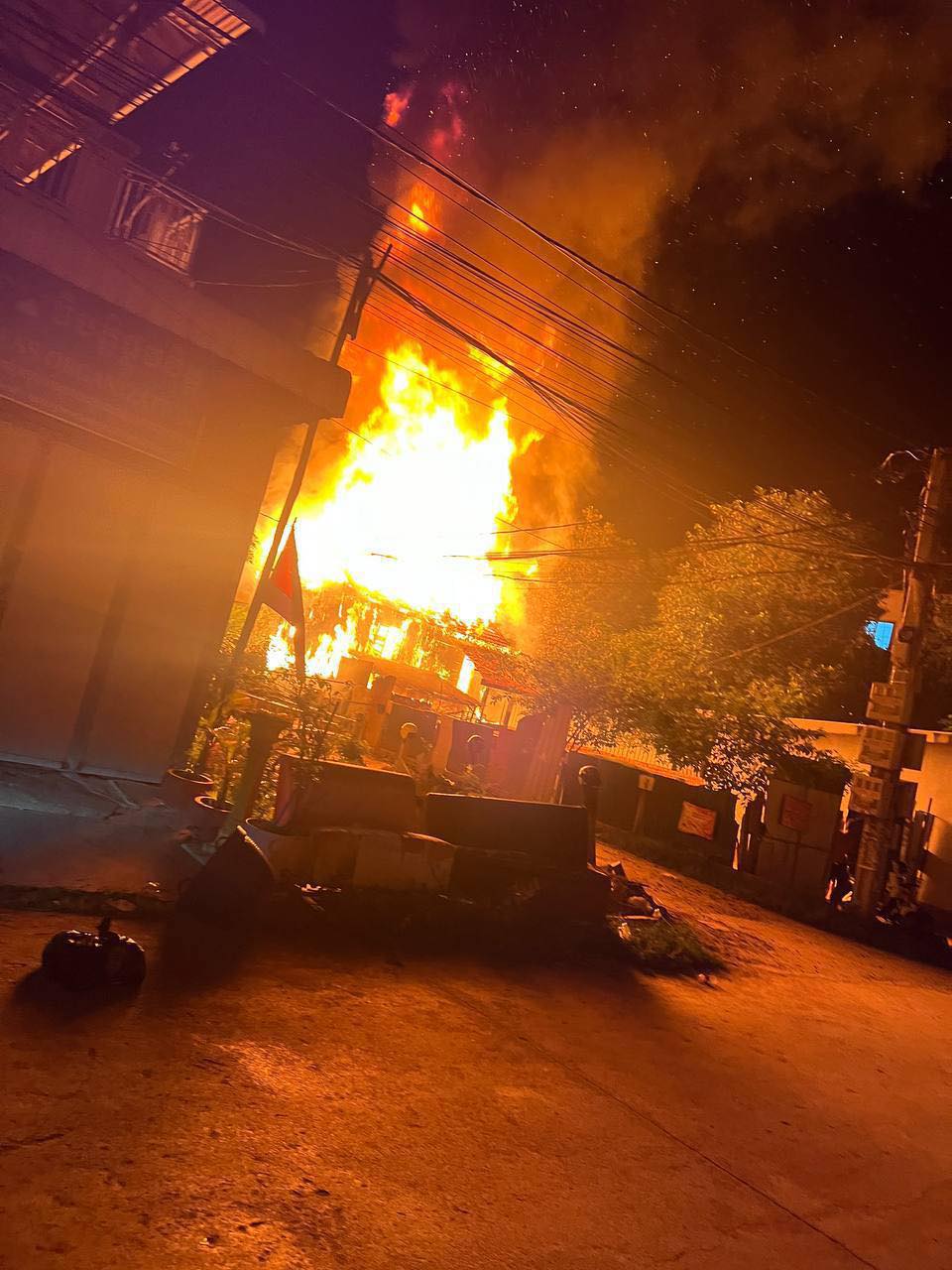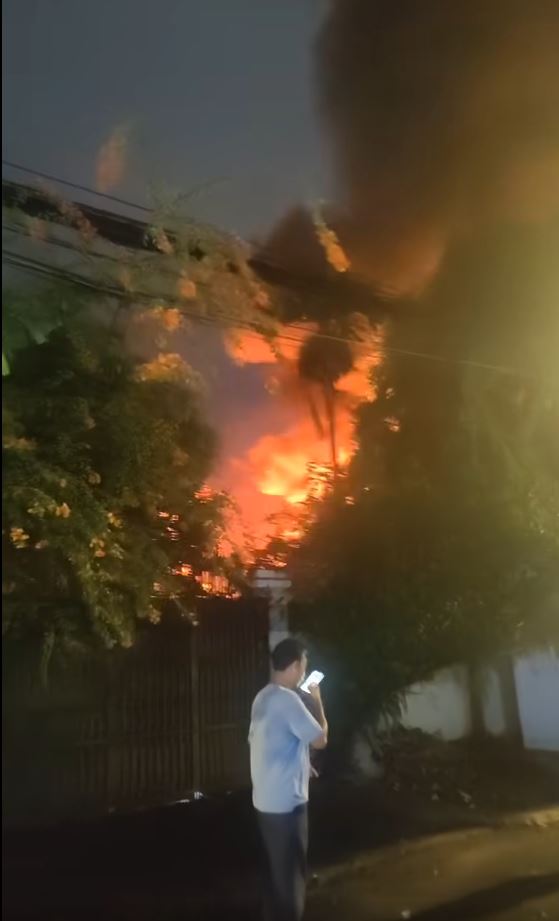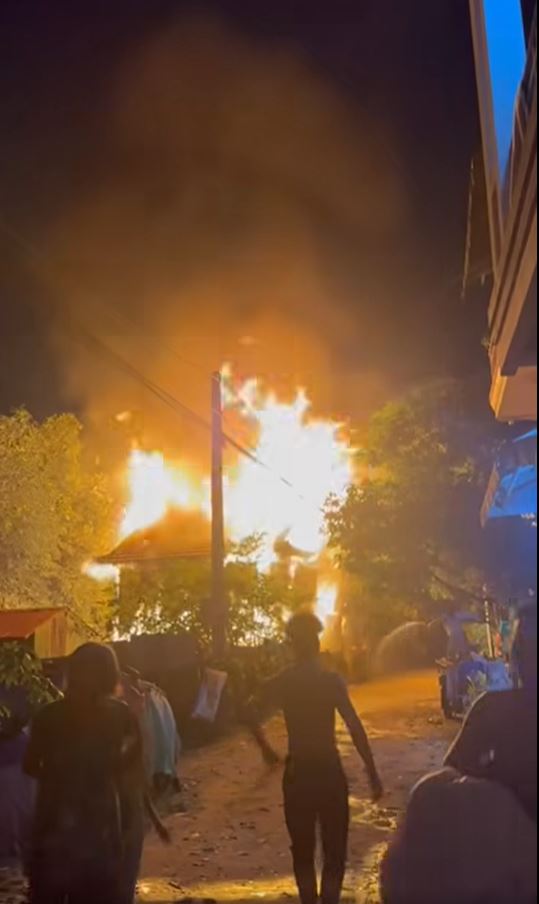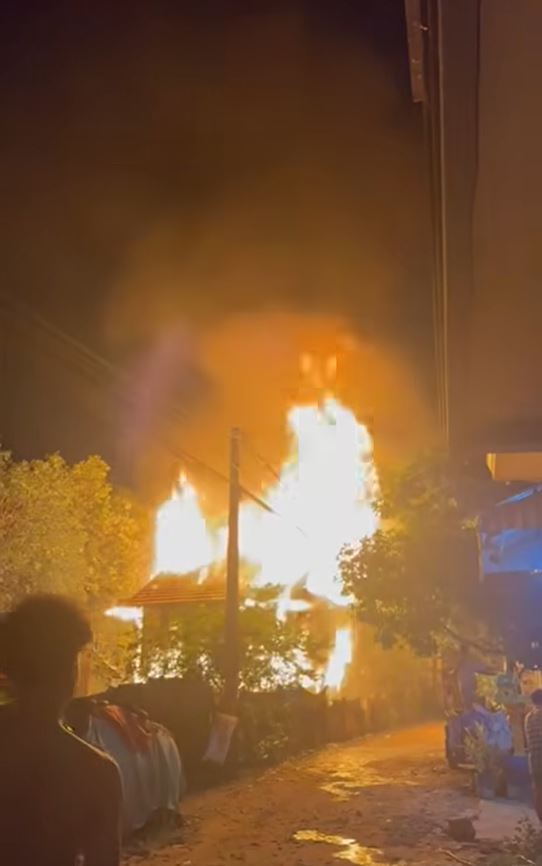Although this is the rainy season with wet weather, reports of fires are still ongoing, such as the one that broke out at midnight on June 18 at Road 1003, Group 7, Lo Kambor Village, Svay Pak Sangkat, Russey Keo District.

Fire is a deadly disease that does not care about the season or time. It can destroy property in the blink of an eye, such as the case above, which destroyed property and 6 houses, even though it has been raining heavily these days.
In addition, On the night of the 18th of the same year, a restaurant known to be owned by celebrity Pich Charnai, famous for his bok choy, located on Street 313, Sangkat Boeung Kak 2, Khan Toul Kork, Phnom Penh, was also damaged by the fire. This is a tragedy for the victim’s family, as it is known that in the past 5 months, there have been 470 fire accidents in Cambodia, killing 40 people and injuring 40. The fire destroyed 405 houses, 47 market stalls, 18 warehouses, 9 handicraft factories, and 9 administrative buildings.
Please do not be careless with this disaster. The cause of the fire is known to be more than 41 percent due to electrical faults, while problems with stoves and the use of electricity account for more than 38 percent, and more than 20 percent can be caused by other negligence factors.

According to the figures, the number of accidents decreased by 10 compared to the same period last year, but the number of fires increased by 30, and the highest number of cases was still in Phnom Penh. Because the fire problem is still a high risk, we think that we, as stakeholders, should study and put forward more strategies to help prevent and contain this disaster.

To reduce the risk of fire, Cambodia should improve public awareness through education in schools and community outreach. In addition, we should all be diligent in inspecting electrical systems and electrical equipment frequently, and should set the standards for electrical systems and equipment correctly. In addition, strengthening laws and regulations should also pay attention to and promote the adoption and compliance with fire safety standards.
In particular, strengthening awareness and inspiring participation in the spirit of prevention and protection in the community is also a positive consequence to be able to help save and protect from this terrible disaster in the future.

In conclusion, fire prevention and control cannot be successful without collective participation. It requires the full participation of all states, individuals, and communities.
We should all exercise caution and cooperate responsibly. Then the fire hazard will be reduced, and the extent of the damage will be smaller.

